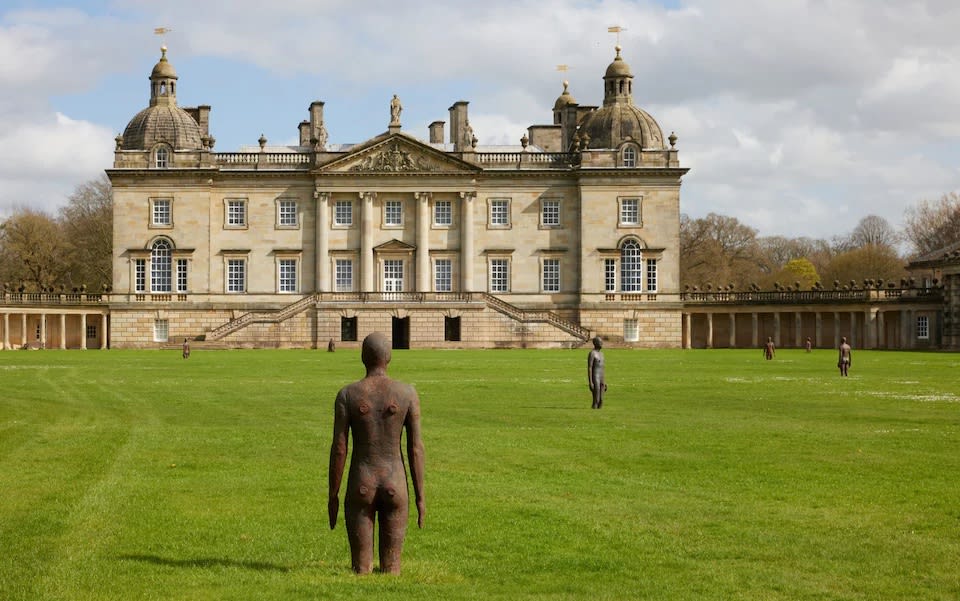Antony Gormley Time Horizon at Houghton Hall
On April 21, Houghton Hall in North Norfolk is reopening to the public after its winter break. Visitors will be able once again to nose around the state rooms and surrounding environs of the grand Palladian mansion, built in the 18th century for Robert Walpole and now the family home of the Marquess and Marchioness of Cholmondeley. Also included in the entry price this year: Time Horizon, a massive installation by Antony Gormley, here shown in the UK for the first time. (An exhibition of ceramics by Magdalene Odundo will also open inside the house in May.)
In the entrance hall of the house, a slab of stone has been pulled up and a rusty iron sculpture of a life-sized male figure, stark naked, halfway submerged in the ground. When I visit, the hole drilled into the floor has not yet been covered, so you can see the figure’s legs and feet resting on a tower of concrete blocks in the basement. Soon, though, they will be hidden away, with only his torso visible. The other objects in the room – neoclassical art, furniture, and so on – will also be cleared out, leaving only this solitary man.
Except he is far from alone. There are 99 others like him, in 23 subtly different poses, scattered across 300 acres of parkland at Houghton. The primary conceit of Time Horizon is that each of these sculptures is positioned at the same datum level, using the height of the submerged figure in the arcade as the point of reference – a single horizon. Norfolk may be among the flattest counties in England, but now suddenly even the tiniest undulations are made apparent. Some of the 1.89- metre-tall figures are almost entirely buried, visible only from the neck up, while others loom above you on grey concrete columns.
The locations of the figures are marked with red dots on a map of the parkland – looking for them feels like playing a three-dimensional version of “Where’s Wally?” It’s fun, but also a little superficial. Maybe the figures are too familiar, too overdetermined.
Gormley has been showing different configurations of these cast-iron sculptures based on moulds of his own naked body for decades now. These ones were cast back in 2006 for an exhibition at an archaeological park in Southern Italy; another 100 are on permanent view on Crosby Beach in Liverpool. But then, for Gormley, the place where the sculptures are situated is as important as anything else. “My ambition for this show is that people should roam far and wide,” he said when the Houghton exhibition was announced. “Time Horizon is not a picture, it is a field and you are in it.” And happily the field it occupies at Houghton is filled with many delights, from the white fallow deer frolicking across the estate to the dozen or so outdoor sculptures by other artists purchased by Lord Cholmondeley in recent years.
In particular, when you come across James Turrell’s Skyspace: Seldom Seen (2002) – a raised oak structure tucked away among the trees – it takes the breath away. The segment of grey cloudy sky visible through the rectangular hole in the ceiling is like a miraculously animated painting. You want to thank Gormley’s rusty stand-ins for leading you there.


















































































































































































